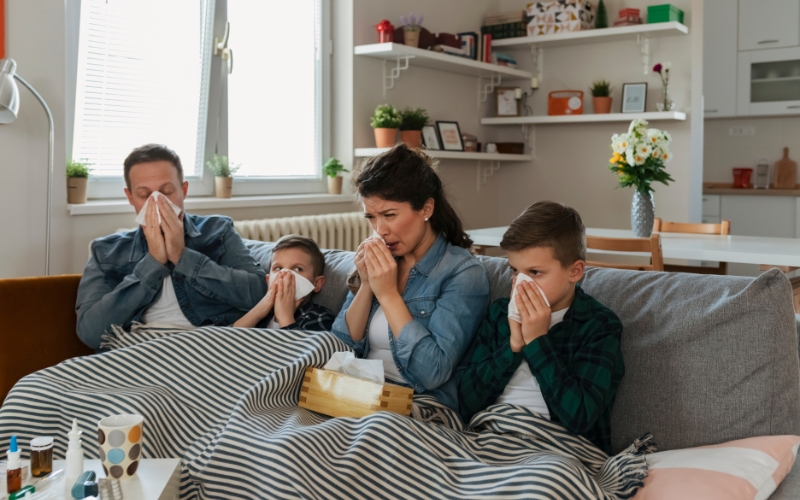Very little beats a good night’s sleep. It’s vital for overall well-being, productivity, and just functioning on a higher level. But sleep can be finicky with many factors that can disrupt sleep patterns. We all know about things like stress, noise, light pollution, and all the other factors experts discuss regularly. But one of the overlooked factors in sleep is indoor air quality. The impact of indoor air quality on sleep can be monumental, affecting both the quality and duration of our rest.
Why Does Indoor Air Quality Impact Sleep?
The air in our homes can contain various pollutants. These include dust, pet dander, pollen, mold spores, and Volatile Organic Compounds (VOCs) that are emitted from household products and other materials. Breathing in these pollutants can irritate the respiratory system, trigger allergies or asthma, and contribute to breathing difficulties. Those difficulties don’t go away when that head hits the pillow.
But there’s more to it than that even. Exposure to high levels of indoor air pollutants has been linked to sleep disturbances. This includes issues with falling asleep, staying asleep, and just general sleep quality. The bedroom can be a particularly difficult spot with so many VOCs in mattresses and bedding products as some contain plasticizers and flame-retardants.
The longer we spend in close contact with these pollutants, the more VOCs we get exposed to. Add in that our bodies also can increase the surface temperature of the mattress. That increases humidity, and increases in temperature and humidity can create the perfect (or really imperfect) conditions for house dust mites and they can help release more VOCs in the air.
Of course, it’s not just about the air we breathe while in the bedroom that can impact sleep. It’s the air we breathe throughout the day, whether it’s in your car, your office, a restaurant or anywhere else. Respiratory issues that pop up from those air pollutants can be a sleep disruptor hours later as well. These pollutants can come from any of a number of different sources, including paints, cleaning products, furnishings, and more.
Some Practical Tips to Improve Your IAQ and Sleep Better
- Increase Ventilation – Ensure there’s adequate airflow in your building by opening windows and using exhaust fans, especially in areas prone to moisture buildup like bathrooms and kitchens.
- Reduce Sources of Indoor Pollution – Opt for low-VOC or VOC-free products when painting or furnishing. Choose natural cleaning products and avoid smoking indoors.
- Keep Indoor Humidity Levels in Check – Use a dehumidifier to control moisture levels and prevent mold growth, which exacerbate respiratory issues.
- Regular Maintenance – Keep your HVAC systems, filters and ducts cleaned to prevent the buildup of dust, mold, and other contaminants.
- Find an Air Purification Solution – This is where Synexis comes into play with patented Dry Hydrogen Peroxide (DHP®) technology that has stood up to all the microbes it has faced.
By improving indoor air quality in all buildings, we can create an environment more conducive to restful and restorative sleep. Prioritizing clean air benefits physical health, but also contributes to better sleep, and we all know how vital sleep can be.







